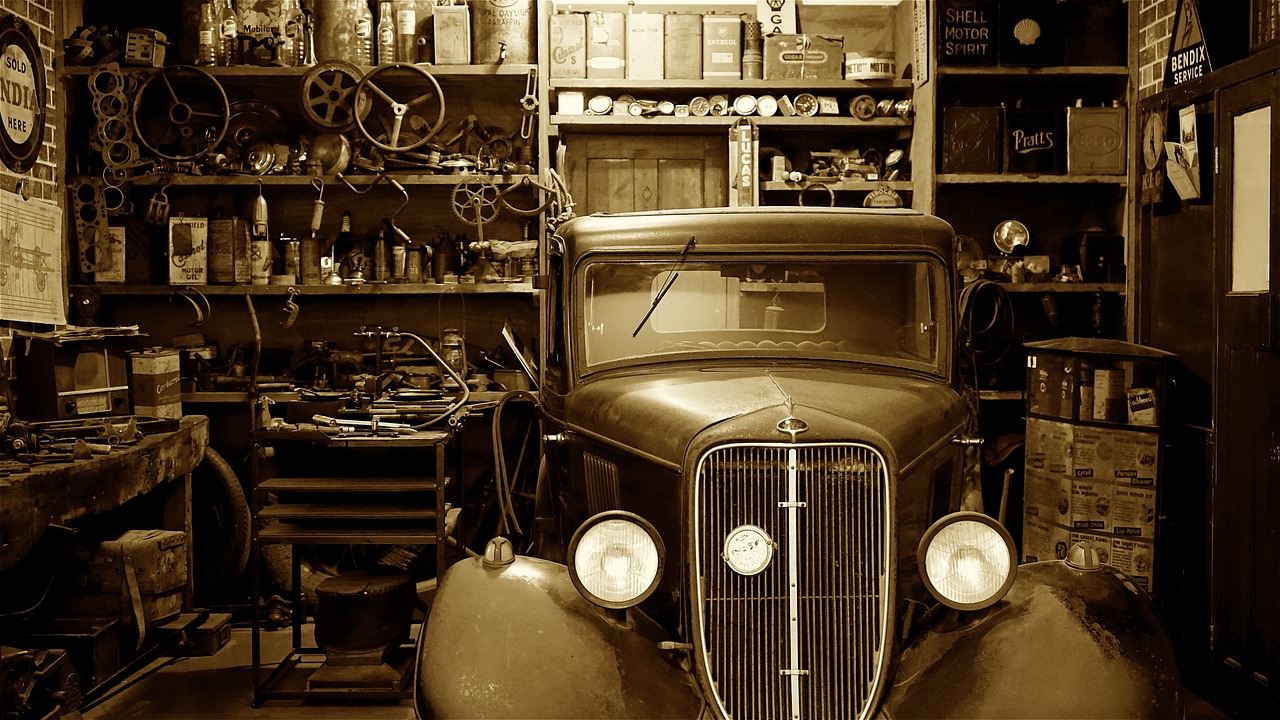Rediscovering the Charm: What Made 1960s BMWs So Special?

Introduction to 1960s BMWs
The 1960s marked a pivotal decade for BMW, transforming the brand into a symbol of luxury, performance, and engineering excellence. Let’s take a moment to journey back in time and explore what made these magnificent machines special.
Iconic Models of the 1960s
During this era, several models stood out:
- BMW 1600: Launched in 1966, it became a favorite for its sporty handling and stylish design.
- BMW 2002: Introduced in 1968, it is often credited with establishing the compact sports sedan segment.
- BMW 507: Though produced in limited numbers, its beauty and performance made it legendary.
Design Philosophy
The design of 1960s BMWs was characterized by:
- Clean Lines: The simplicity and elegance of the bodywork were defining features.
- Functional Interiors: Interior design focused on driver comfort and practicality without compromising aesthetics.
- Distinctive Grilles: The iconic kidney grille became a hallmark of BMW’s identity.
Engineering Excellence
BMW’s commitment to engineering was evident in several key areas:
- Powerful Engines: The use of advanced engineering techniques allowed for high-performance engines.
- Suspension Innovation: Many models featured independent suspension systems that enhanced handling and ride quality.
Cultural Impact
1960s BMWs were more than just cars; they became cultural icons:
- Hollywood Stardom: Featured in numerous films, they symbolized wealth and status.
- Motorsport Success: Participation in racing events helped cement their reputation for performance.
Legacy and Influence
The legacy of 1960s BMWs continues to influence modern vehicles:
- Design Language: Many modern BMWs pay homage to the classic design elements of the 1960s.
- Driving Experience: The emphasis on driver engagement can be traced back to these earlier models.
As we rediscover the charm of 1960s BMWs, it becomes clear that their blend of elegance, performance, and innovation has left an indelible mark on the automotive world. Whether you experienced these vehicles in their heyday or are learning about them now, their timeless appeal continues to resonate.
A Walk Down Memory Lane: Iconic Models That Defined an Era

The 1960s were a remarkable decade for the automotive industry, particularly for BMW. This era produced some of the most iconic models that not only defined a brand but also left an indelible mark on automotive history. Allow yourself to reminisce as we take a closer look at these masterpieces.
BMW 2002: The Birth of a Legend
The BMW 2002 burst onto the scene in 1968, quickly becoming a symbol of sportiness and practicality.
| Year | Model | Engine | Horsepower |
|---|---|---|---|
| 1968 | BMW 2002 | 1.6L I4 | 100 hp |
With its compact size and lively performance, the 2002 was a game-changer. The success of this model laid the groundwork for the subsequent 3 Series, establishing a legacy that continues today.
BMW 3.0 CS: The Epitome of Luxury
In 1968, the BMW 3.0 CS debuted as a luxurious coupe that was both elegant and powerful.
| Year | Model | Engine | Horsepower |
|---|---|---|---|
| 1968 | BMW 3.0 CS | 3.0L I6 | 180 hp |
This stunning vehicle showcased a combination of performance and comfort, quickly becoming a favorite among enthusiasts and collectors alike.
BMW 2800: Power Meets Performance
The BMW 2800, introduced in 1968, was known for its impressive performance and sleek design.
| Year | Model | Engine | Horsepower |
|---|---|---|---|
| 1968 | BMW 2800 | 2.8L I6 | 170 hp |
With its robust engine and refined styling, the 2800 served as a precursor to the 5 Series, further solidifying BMW’s reputation for excellence.
Interactive Reflection
As you reflect on these iconic models, consider the following questions:
Which model resonates most with your memories from the 1960s?
What experiences do you associate with driving or seeing these vehicles?
How do you think these models influenced the design of modern BMWs?
Each of these vehicles not only represents a significant chapter in BMW’s history but also encapsulates the spirit of an era that valued design, performance, and innovation. This legacy continues to inspire new generations of automotive enthusiasts.
Under the Hood: The Ingenious Engineering of 1960s BMWs

The 1960s was a transformative decade for the automotive industry, and BMW stood at the forefront of this evolution. With a commitment to performance and luxury, BMW’s engineering during this era set a benchmark for future generations. Let’s delve deeper into the remarkable engineering feats that defined BMWs of the 1960s.
1. The Iconic Inline-Six Engine
One of the standout features of 1960s BMWs was the inline-six engine. This configuration provided a smooth and powerful performance, making it a favorite among enthusiasts. The engine’s balance and refinement offered a driving experience that was both responsive and comfortable.
2. Innovations in Suspension
BMW took bold steps in suspension design during the 1960s. The introduction of the MacPherson strut front suspension provided enhanced stability and handling. This innovation allowed BMWs to navigate winding roads with ease, making them a popular choice for drivers seeking sportiness.
3. Lightweight Materials
In an era where weight was often overlooked, BMW embraced lightweight materials to improve performance. The use of aluminum in engine components and body panels contributed to a lower overall weight, enhancing speed and efficiency. This focus on reducing weight without sacrificing strength was a hallmark of 1960s BMW engineering.
4. Aerodynamic Design
BMW recognized early on the importance of aerodynamics in vehicle performance. The sleek lines and contours of cars like the BMW 2002 not only looked stunning but also improved fuel efficiency and handling. This attention to detail in design was revolutionary for its time.
5. Safety Features
While performance was paramount, BMW also prioritized driver safety. The introduction of crumple zones and reinforced passenger compartments showcased BMW’s commitment to protecting its drivers. These innovations were pioneering and set the stage for safety standards in the automotive industry.
The engineering excellence of 1960s BMWs is a testament to the brand’s enduring legacy. The combination of innovative engines, advanced suspension systems, lightweight materials, aerodynamic designs, and a strong focus on safety created vehicles that not only performed exceptionally but also offered a timeless elegance that continues to captivate enthusiasts today. Take a moment to reflect on your own experiences with these classic machines—what stories do you have?
Timeless Design: How Style and Functionality Merged in Classic BMWs
Introduction to Timeless Design
The 1960s marked a significant era in automotive history, particularly for BMW. This decade saw the birth of models that not only defined a brand but also set a standard for design and engineering. Let’s delve into how style and functionality merged seamlessly in these classic vehicles.
When you think of 1960s BMWs, several models immediately come to mind. The BMW 2002, for instance, became a symbol of sporty elegance. Its compact design was not just aesthetically pleasing but also engineered for performance. The BMW 507, with its graceful lines and powerful engine, showcased a blend of luxury and sport that appealed to discerning drivers.
Design Philosophy: Form Meets Function
BMW’s design philosophy during the 1960s was rooted in the idea that form should follow function. This meant that each curve and line was not merely for looks but served a purpose. The aerodynamics of these vehicles were carefully considered, enhancing both performance and fuel efficiency.
The Influence of Modernism
The 1960s was an age of modernism, and BMW embraced this movement wholeheartedly. Influenced by renowned designers, the cars featured clean lines and minimalistic interiors. This modernist approach ensured that the vehicles remained timeless, appealing to both the young and the aged.
Materials and Craftsmanship
During this decade, BMW utilized high-quality materials that not only enhanced the aesthetic appeal but also contributed to the durability of the cars. The interiors often featured leather and real wood, reflecting luxury that was accessible yet refined.
Interactive Experience: Discover Your Favorite Model
Think back to your favorite BMW from the 1960s. Was it the sporty BMW 2002 or the elegant BMW 507? Take a moment to remember the details that captivated you. What about the design or the performance made it stand out? Engage with those memories as they are part of the enduring legacy of these timeless machines.
The 1960s BMWs are more than just cars; they represent a harmonious blend of style and functionality. As we reflect on their legacy, we see how they continue to inspire modern automotive design. Their timeless elegance remains a testament to BMW’s commitment to excellence, ensuring that these vehicles will be cherished for generations to come.
Legacy of Performance: The Driving Experience of Vintage BMWs
Experience the Thrill of the Open Road
Imagine yourself behind the wheel of a classic BMW from the 1960s. The roar of the engine, the feel of the leather seats, and the sleek lines of the bodywork create an experience that is simply unforgettable. These cars were designed not just for transportation but for the sheer joy of driving.
Unmatched Engineering
The 1960s marked a golden era in automotive engineering, especially for BMW. The engineers and designers worked tirelessly to create vehicles that offered both performance and luxury. The iconic BMW 2002, for instance, is often celebrated for its balance of power and handling. Let’s delve deeper into what made these vehicles so special:
| Model | Engine Type | Horsepower | Top Speed (mph) |
|---|---|---|---|
| BMW 2002 | 4-cylinder | 120 hp | 125 |
| BMW 3.0 CS | 6-cylinder | 180 hp | 135 |
| BMW 700 | 4-cylinder | 40 hp | 80 |
The Joy of Driving
What sets these vintage BMWs apart is the driving experience. Each model was crafted with precision, ensuring that every turn and acceleration was exhilarating. The lightweight construction combined with powerful engines allowed for agile handling that enthusiasts still rave about today.
Classic Design Meets Modern Comfort
Step inside a 1960s BMW, and you’ll find a blend of classic aesthetics and thoughtful design. With rich leather interiors and an ergonomic layout, these vehicles provided comfort for long journeys. The dashboard, while simplistic by today’s standards, featured all the necessary instruments that put the driver in control.
Join the Community
Owning a vintage BMW is more than just having a car; it’s about becoming part of a community. Enthusiasts often gather for meetups, showcasing their prized possessions and sharing stories of their driving experiences. If you own one, consider joining local clubs or online forums to connect with fellow aficionados.
Preserving the Legacy
As time goes on, the importance of preserving and appreciating these vintage vehicles becomes ever more significant. Not only do they represent an era of remarkable engineering, but they also remind us of the joy that driving can bring. Whether you’re a long-time owner or simply an admirer, keeping the spirit of these classic BMWs alive is a worthy endeavor.
Final Thoughts
In a world where technology increasingly dominates our lives, the vintage BMWs of the 1960s stand as a testament to the enduring legacy of performance and elegance. Their ability to evoke nostalgia while delivering an unmatched driving experience continues to captivate both the young and the young at heart.
Cultivating Passion: Stories from BMW Enthusiasts of the 1960s
Exploring the Passion for BMWs
In the 1960s, BMW was more than just a car manufacturer; it was a cultural phenomenon. Owners of these magnificent machines often share their stories, reflecting a deep-rooted connection to their vehicles that transcends mere transportation. Let’s dive into the heart of the 1960s BMW experience through the eyes of those who lived it.
Unforgettable Memories
John, a 1968 BMW 2002 Owner: “I remember the first time I got behind the wheel of my 2002. It was a warm summer day, and the engine purred like a contented cat. Every twist and turn on the road felt exhilarating.”
John’s journey with his BMW started at a local dealership, where he was immediately drawn to its sleek lines and sporty design. He recalls the joy of weekend drives and the camaraderie built with fellow enthusiasts at car meets.
The Community of Enthusiasts
BMWs of the 1960s fostered a unique community among their owners. Margaret, a proud BMW 1600 owner, shares:
- “We would gather at local diners, each showing off our polished beauties. It wasn’t just about the cars; it was about the friendships we formed.”
- “I still have the scrapbook filled with photos and memories from those meet-ups. The laughter, stories, and even the occasional rivalry over who had the best modifications.”
Engineering Marvels
The engineering brilliance of BMWs during this era captured the hearts of many. Robert, an engineer, remarked:
“The precision and performance were unmatched. I admired how the engineers made every component work in harmony. It was a masterpiece of German engineering.”
Legacy and Passion
Even today, the passion for 1960s BMWs remains alive. Enthusiasts participate in restoration projects, ensuring that these classic models retain their charm. Linda, an avid restorer, states:
“Every scratch tells a story. Restoring a BMW from the 60s is like breathing new life into a piece of history. It’s a labor of love.”
Join the Conversation
Have you ever owned or admired a 1960s BMW? What stories do you hold? Share your experiences and join the community of fellow enthusiasts who appreciate the elegance and legacy of these remarkable vehicles. Your stories contribute to the rich tapestry of BMW history.
Craftsmanship Unmatched: The Art of BMW Manufacturing in the 1960s
Introduction to BMW Manufacturing
In the 1960s, BMW emerged as a symbol of luxury and performance, thanks to its unmatched craftsmanship. This period marked a significant evolution in the automotive industry, where attention to detail and quality became paramount. Let’s explore the art behind BMW manufacturing during this golden era.
The Philosophy of Craftsmanship
BMW’s manufacturing philosophy in the 1960s was deeply rooted in precision and quality. The engineers and craftsmen worked tirelessly to ensure that every vehicle was not just a mode of transport, but a piece of art.
Key Aspects of BMW Manufacturing
- Handcrafted Excellence: Many components were still crafted by hand, allowing for meticulous attention to detail.
- Innovative Engineering: BMW embraced new technologies while maintaining traditional craftsmanship techniques.
- Quality Control: Stringent quality checks ensured that every car leaving the factory met the highest standards.
The Role of Skilled Labor
The workforce at BMW during the 1960s was comprised of highly skilled artisans and engineers. Their dedication to their craft was evident in every vehicle produced. Each worker took pride in their contribution, resulting in a deep sense of community and shared purpose.
Iconic Models and Their Manufacturing
Among the most iconic models produced in the 1960s were:
| Model | Year Introduced | Features |
|---|---|---|
| BMW 1500 | 1962 | First of the “New Class” series; sporty handling |
| BMW 2002 | 1968 | Compact size; powerful engine; popularized the term “sports sedan” |
| BMW 3.0 CSL | 1968 | Lightweight design; racing success; iconic styling |
Legacy of BMW Craftsmanship
The legacy of 1960s BMW craftsmanship continues to influence modern manufacturing practices. The commitment to quality, innovation, and aesthetic appeal set a benchmark that many aspire to achieve today.
As we reflect on the art of BMW manufacturing in the 1960s, it is clear that the dedication to craftsmanship created vehicles that are still revered today. For enthusiasts and collectors, these cars are more than just machines; they are a testament to an era of unmatched artistry and engineering excellence.
Nostalgia on Wheels: Reviving the Spirit of 1960s BMWs Today
Remembering the Golden Age of Driving
Picture yourself behind the wheel of a classic 1960s BMW. The roar of the engine, the sleek lines of the body, and the feeling of freedom as you glide down the open road. It’s not just a car; it’s a time machine that transports you back to an era filled with charm and elegance.
The BMW 2002: A True Icon
One of the standout models of the 1960s was the BMW 2002. This compact sedan became a symbol of sportiness and style. With its powerful engine and nimble handling, it was the car that brought joy to countless drivers. Do you remember the thrill of driving or riding in one?
Reviving the Classics
Today, the spirit of the 1960s BMWs is being revived in several ways:
Restoration Projects: Enthusiasts are meticulously restoring vintage BMWs, preserving their beauty and performance.
Classic Car Shows: Events dedicated to showcasing these timeless vehicles allow fans to gather and share stories.
Modern Replicas: Some manufacturers are creating modern versions inspired by the classic designs, merging nostalgia with contemporary technology.
Have you attended a classic car show? Or perhaps you’ve had the chance to drive a 1960s BMW? Share your experiences with friends and family. These stories not only keep the memory alive but also inspire younger generations to appreciate the elegance of the past.
The Joy of Ownership
Owning a classic BMW isn’t just about having a car; it’s about owning a piece of history. For many, it’s a connection to their youth, a reminder of carefree days spent cruising along scenic routes.
Conclusion: A Legacy That Lives On
The 1960s BMWs are more than just vehicles; they represent a legacy of timeless elegance and engineering excellence. As we celebrate these classics, we keep their spirit alive, inviting new generations to experience the joy and nostalgia they bring.
The Cultural Impact: How 1960s BMWs Influenced a Generation
The Cultural Impact of 1960s BMWs
In the vibrant tapestry of automotive history, the 1960s stand out as a decade of innovation, style, and cultural evolution. This was the era when BMW, a brand synonymous with performance and luxury, began to carve its niche in the hearts of car enthusiasts and everyday drivers alike. Let’s delve into the profound influence these iconic vehicles had on a generation.
Iconic Models That Defined an Era
During the 1960s, several BMW models emerged as symbols of sophistication and engineering prowess. Among them:
- BMW 1500: Launched in 1962, this model marked the beginning of the “Neue Klasse” (New Class) series, setting the stage for modern sports sedans.
- BMW 2002: Introduced in 1968, the 2002 became an instant classic, celebrated for its performance and handling, and is credited with popularizing the compact sports sedan segment.
Design Philosophy and Aesthetic Appeal
BMW’s design philosophy during the 1960s emphasized sleek lines, bold curves, and a driver-centric cockpit. The aesthetic appeal of these vehicles resonated with the youth, reflecting their aspirations:
- Simplicity and Elegance: The minimalist yet sophisticated designs conveyed a sense of class.
- Performance-Oriented Features: The engineering excellence behind the vehicles enhanced the driving experience, making them a joy to operate.
The Social Context: A Time of Change
The 1960s were not just about cars; they were a time of significant social change. As individuals sought freedom and self-expression, owning a BMW became a statement of identity:
- Counterculture Movement: Many young people associated BMWs with the counterculture movement, symbolizing rebellion against the mainstream.
- Globalization of Brands: BMW’s entry into markets outside Germany helped spread its cultural footprint, appealing to a global audience.
Influence on Popular Culture
These vehicles also made their mark on popular culture, appearing in films, music, and literature:
- Film Appearances: BMWs were featured in iconic films of the era, further cementing their status as aspirational vehicles.
- Music and Art: The sleek aesthetics and performance of BMWs inspired musicians and artists, who often referenced them in their work.
Legacy and Enduring Appeal
The legacy of 1960s BMWs continues to influence modern automotive design and consumer preferences. Enthusiasts today often find themselves drawn to classic models, celebrating their historical significance:
- Classic Car Shows: Events dedicated to vintage cars often feature BMWs prominently, showcasing their timeless appeal.
- Restoration Projects: Many owners invest in restoring these vehicles, preserving their history for future generations.
In retrospect, the 1960s BMWs are more than just cars; they are cultural artifacts that represent a pivotal moment in history. They influenced not only the automotive industry but also the lifestyle and values of a generation. As we reflect on their enduring legacy, we recognize that these iconic vehicles will forever hold a special place in the hearts of those who experienced their magic.
From Past to Present: The Evolution of BMW Inspired by the 1960s
Introduction to the 1960s BMW Era
The 1960s was a defining decade for BMW, marking the company’s transition into a global automotive powerhouse. This period introduced some of the most iconic models that continue to influence design and technology today. Can you recall your first encounter with a 1960s BMW? Perhaps it was the unmistakable BMW 2002 or the elegant BMW 3.0 CSL? Let’s take a moment to revisit those memories.
The Design Philosophy: Classic Meets Modern
BMW’s design philosophy during the 1960s centered around purity of form and functionality. The clean lines and distinctive kidney grille became hallmarks of the brand. Do you remember the sleek curves and the way they caught the light? The influence of this design language can still be seen in BMW’s modern vehicles. For instance, the current BMW 4 Series pays homage to its predecessors while incorporating contemporary aesthetics.
Technological Innovations: A Leap Forward
The 1960s also saw BMW embracing technological advancements. The introduction of fuel injection systems and advanced suspension setups in models like the BMW 1500 revolutionized the driving experience. Isn’t it fascinating how these innovations have paved the way for features we take for granted today, such as adaptive cruise control and dynamic stability control?
A Legacy of Performance
Performance has always been a cornerstone of BMW’s identity. The 1960s models, especially the BMW 3.0 CSL, were not just designed for the road but also for the racetrack. The legacy of performance-oriented engineering continues with modern models like the BMW M3 and M4. Can you feel the thrill of driving a BMW on an open road? What features do you appreciate the most in today’s performance cars?
Enduring Popularity: The Classic Car Movement
The classic car movement has seen a significant resurgence, with many enthusiasts restoring and preserving 1960s BMWs. This nostalgia for the past fuels a vibrant community that celebrates these vehicles. Have you attended any classic car shows? What models captured your heart? The BMW 2002 remains a fan favorite, cherished for its simplicity and driving enjoyment.
Conclusion: Bridging Generations
From the classic designs of the 1960s to the innovative features of today, BMW has successfully bridged generations. The spirit of the 1960s continues to inspire new models, ensuring that the legacy of elegance and performance endures. What are your thoughts on the evolution of BMW? How do you think the past influences the future of automotive design? Your insights are invaluable as we celebrate this incredible journey.
